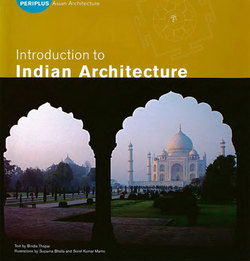Читать книгу Introduction to Indian Architecture - Bindia Thapar - Страница 9
На сайте Литреса книга снята с продажи.
ОглавлениеArchitecture and Science
Indian literary sources provide evidence of the deep and close relationship ancient India had with numerals and other branches of science. Astronomy and astrology were important preoccupations and the building treatise, Vaastu Shastra, relies on calculations based on cosmogony and religious abstract theory. Later examples manifest more overtly the relationship between architecture and the sciences.
Sawai Jai Singh II, the 18th-century ruler of Jaipur, was a keen scholar, statesman and astronomer, who was inspired by the works of Mirza Ulugh Beg, the astronomer-king of Samarkand. He built five observatories, called the Jantar Mantar, in the northern cities of Delhi, Ujjain, Varanasi, Mathura and Jaipur.
A perfect blend of function and aesthetics makes these buildings unique creations. A collector of Western scientific instruments, Jai Singh was convinced that the available instruments were not adequate to achieve the degree of accuracy he sought in building observatories. Instead of placing instruments within them, he therefore designed the structures themselves as instruments. Elegant futuristic forms were created by combining various geometrical shapes-hemispheres, arcs, cylinders, cubes and triangles. Until as recently as the advent of the satellite, these structures were used to predict certain meteorological phenomena.
Jantar Mantar, Jaipur
The Jantar Mantar in Jaipur is the largest and best preserved of Jai Singh's five observatories. Built between 1728 and 1734 in red sandstone, it is set in a large garden and consists of sixteen different large-scale instruments or yantras. Of these instruments, the Laghu Samrat Yantra can calculate Jaipur's local time up to an accuracy of 20 seconds. The Chakra Yantra is used to determine the angle of stars and planets from the equator. The Ram Yantra observes the celestial arc between the horizon and the zenith, and also measures the sun's altitude. The Jai Prakash Yantra, believed to be Jai Singh's own invention, verifies the accuracy of the other instruments. The Rashivalaya Yantra is composed of twelve pieces, each representative of a zodiac sign. It is used to cast horoscopes. The 23-meter-high Samrat Yantra is used to forecast the year's rainfall.
South of the City Palace in Jaipur, the Jantar Mantar (literally "instrument to make calculations") was the most ambitious of Jai Singhll's observatories. It looks like a futuristic playground.
The Jantar Mantar in the heart of Delhi is a popular tourist attraction.
Jantar Mantar, Delhi
The Jantar Mantar complex in New Delhi, now obsolete, is located in the heart of the city, in a pleasant park surrounded by high-rise buildings. Built in 1724 and made of red brick and plaster, on a smaller scale than the Jaipur observatory, the structure is popular with tourists.
The Rashivalaya Yantra, made up of twelve pieces, each facing a different constellation, was used by astrologers to make horoscopes.
The Ram Yantra was one of two identical structures used to calculate the celestial arc from horizon to zenith, as well as the altitude of the sun.
Also in the Jaipur observatory, the Unnatansha Yantra was used to determine the position of the celestial bodies at any time of the day or night.
